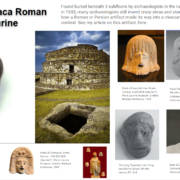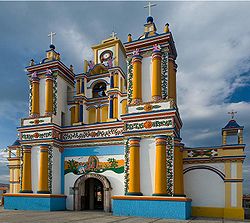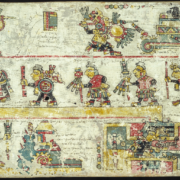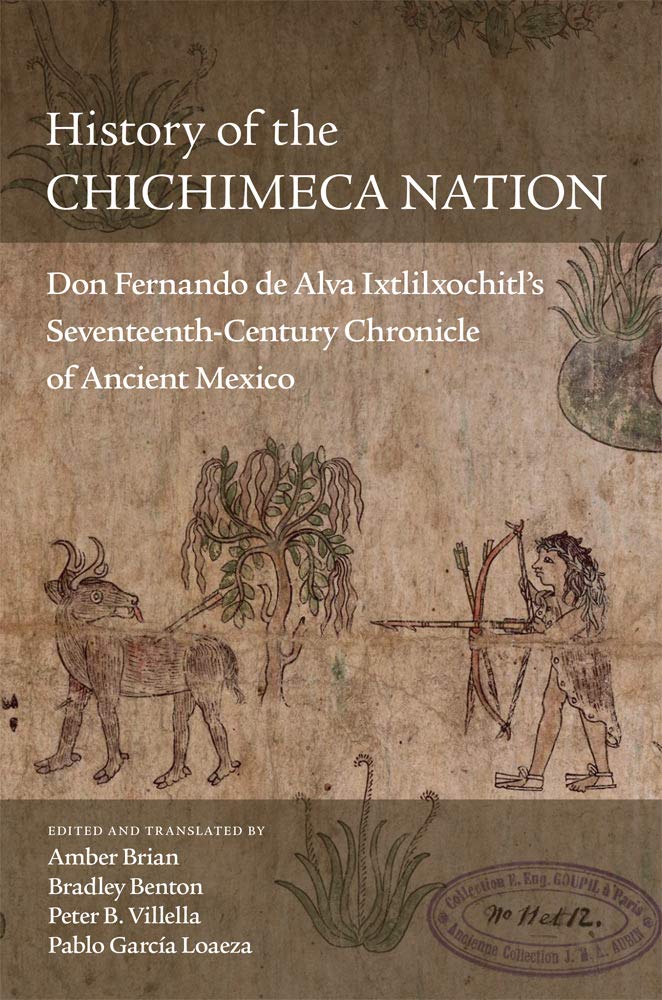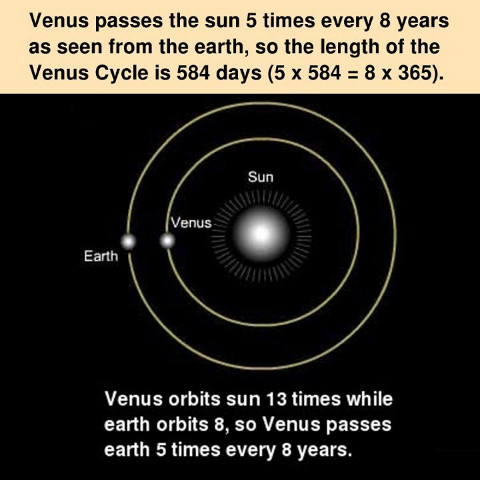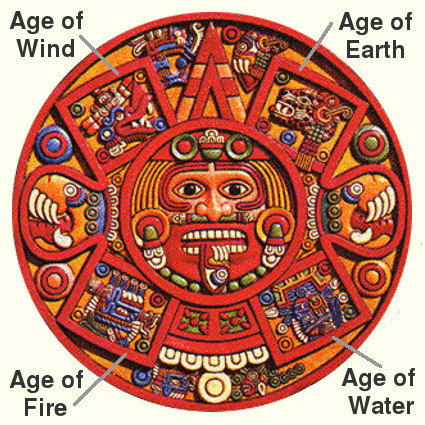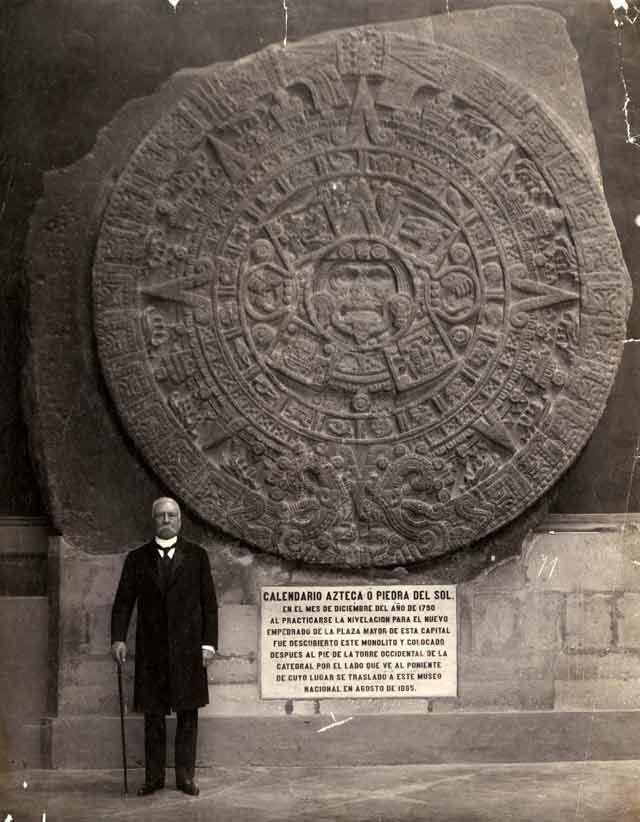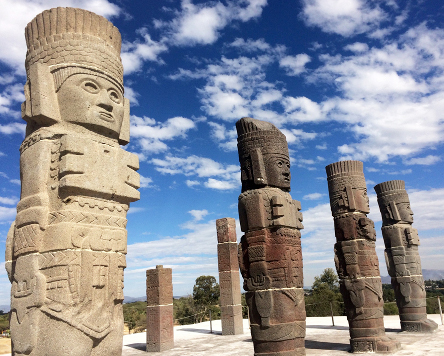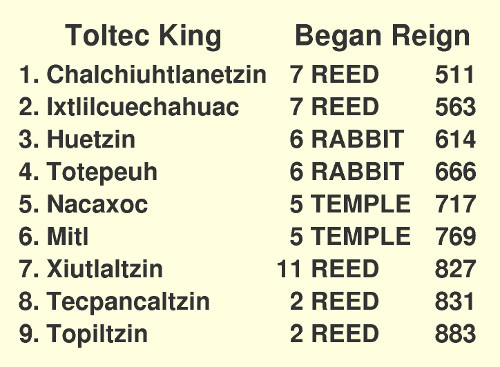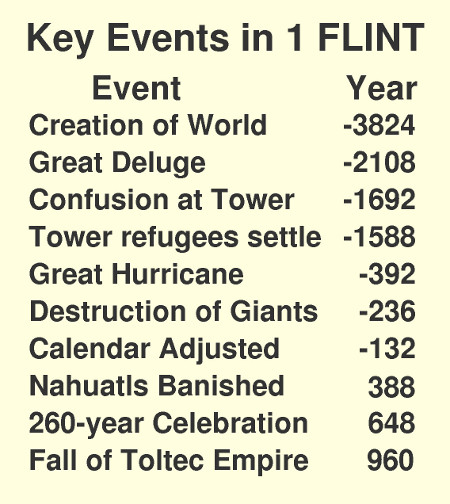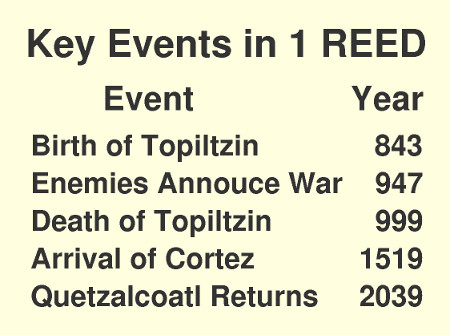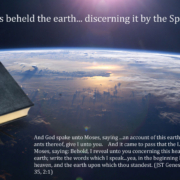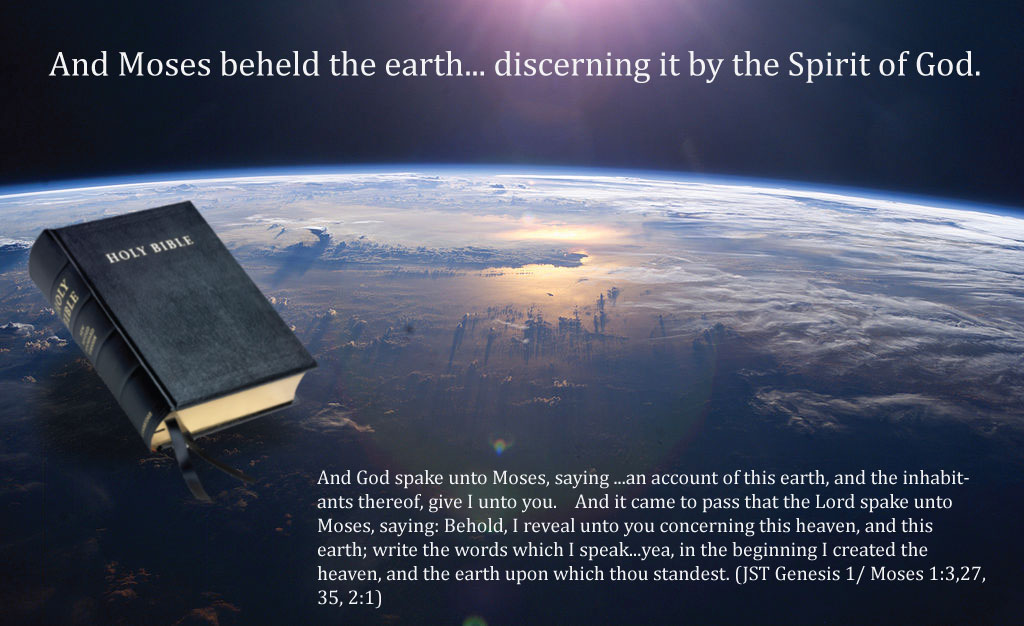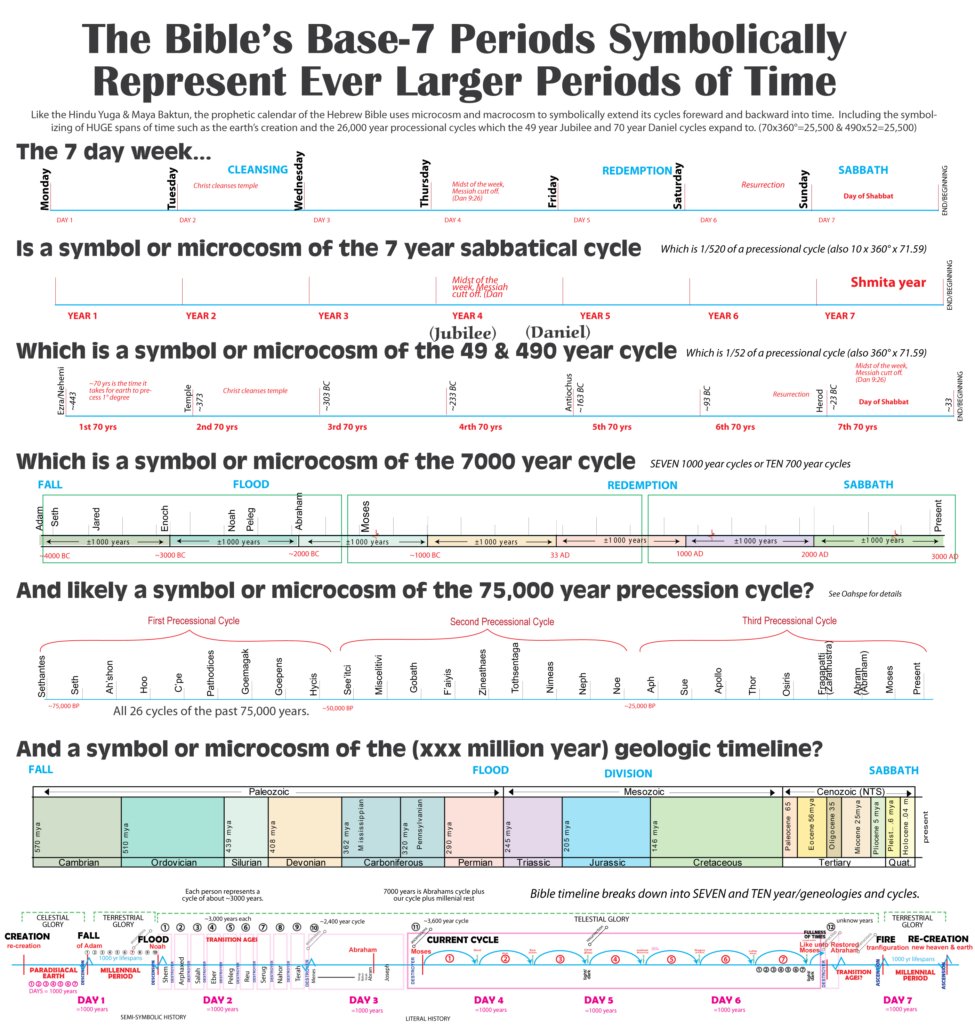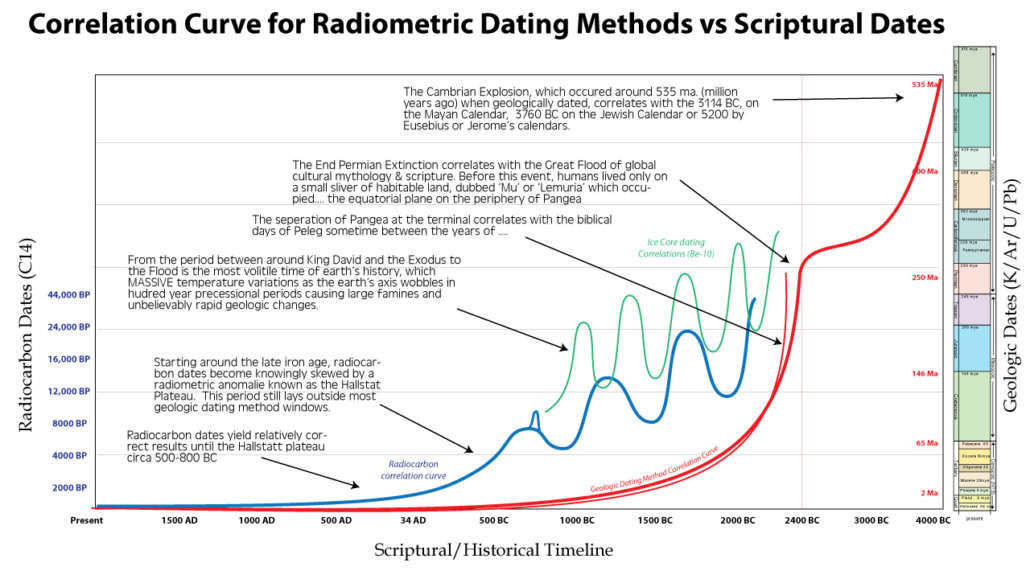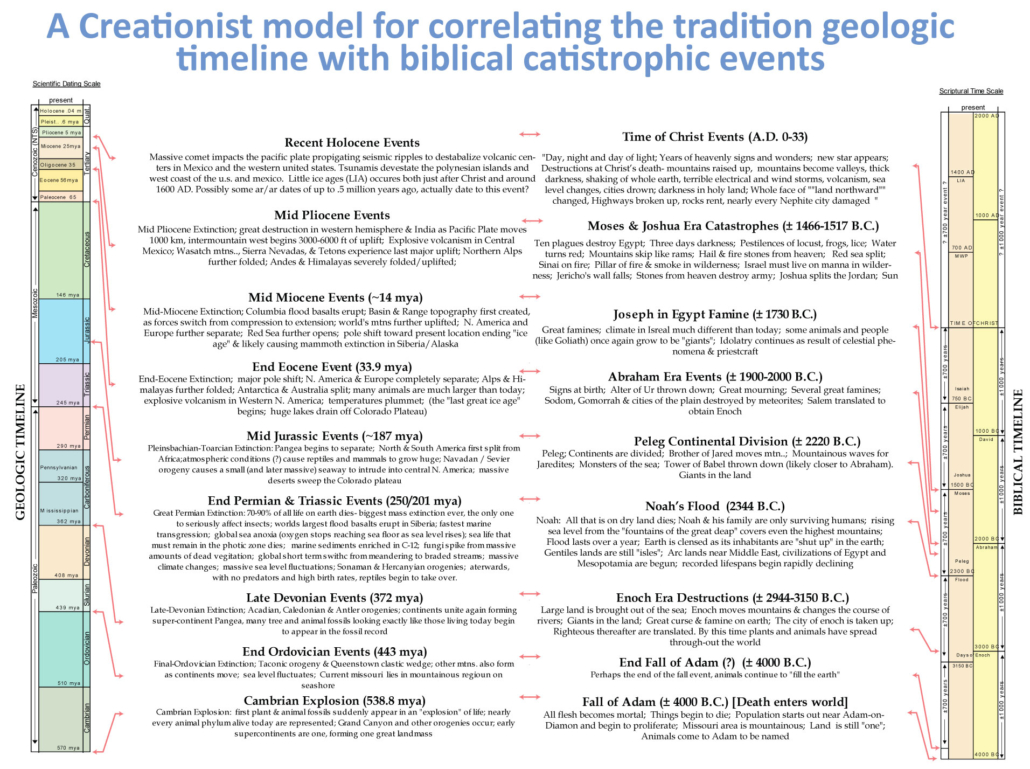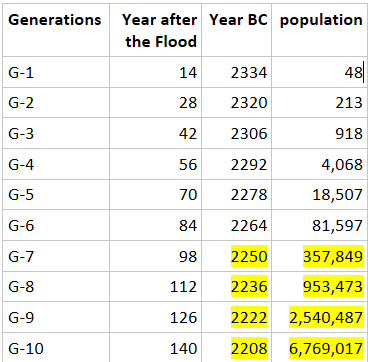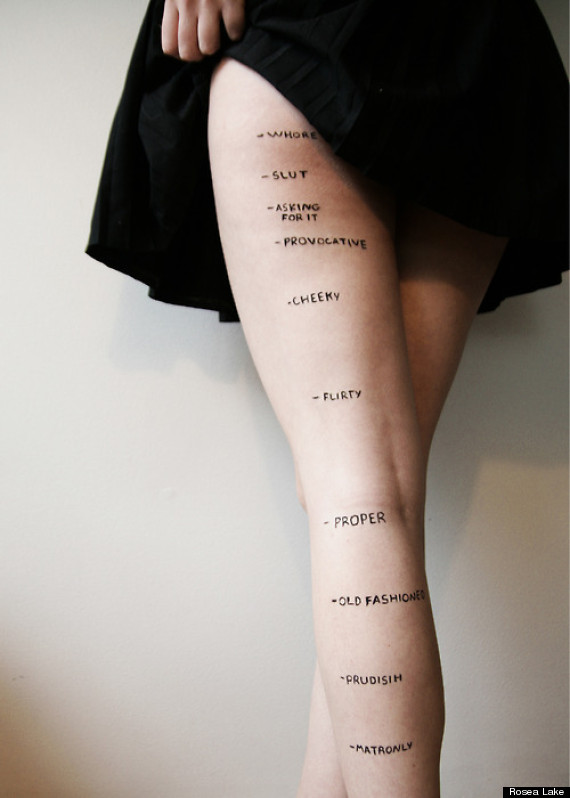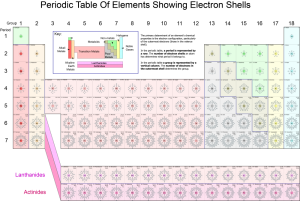The Calixtlahuaca Roman Figurine: Evidence of Transoceanic travel to Mesoamerica.
Summarized version of a paper presented by Romeo H. Hristov and Santiago Genovés T. at the 66th Annual Meeting of the Society of American Archaeology in New Orleans, LA, April 22, 2001)
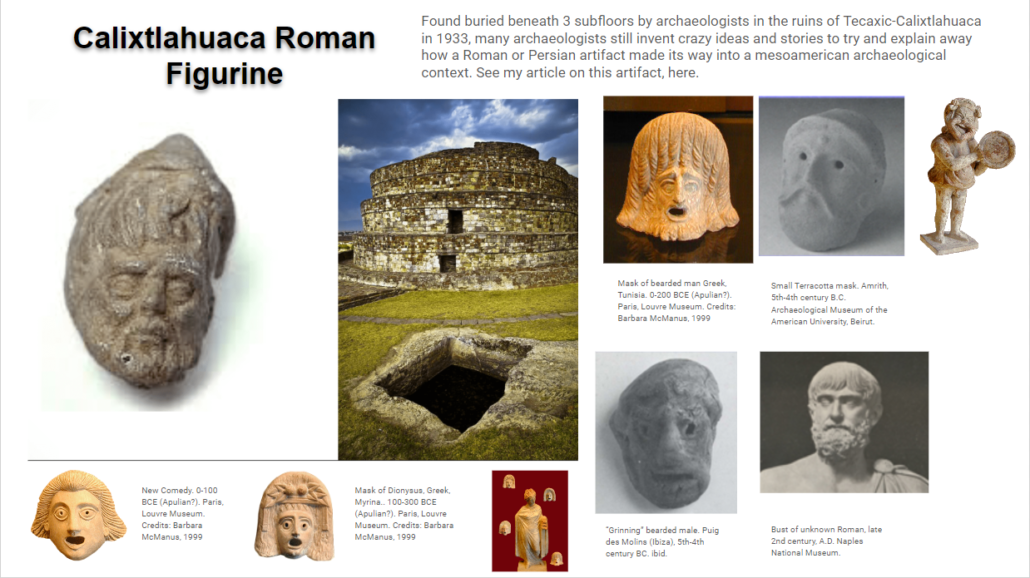
From the early sixteenth century until the present many hypotheses of Pre-Columbian transoceanic contacts have been discussed (Sorenson and Raish 1996). With the only exception of the well-established Medieval Norse contacts with North American Indians (McGee 1984) all of the mentioned hypotheses share a common critical weakness: the lack of support in direct archaeological evidence, that is, genuine Old Word objects found in Pre-Columbian archaeological contexts (Willey 1985: 358). During the XIX and XX centuries some more or less reliable finds of such objects were reported from Mesoamerica; however, until the present time none of them have been accepted as incontrovertible evidence of inter-hemispheric contact before 1492.
Among the mentioned data one of the most trustworthy is a small terracotta head of supposed Roman origin found in Mexico (García Payón 1961, 1979: 205-206; Heine-Geldern 1961; see Figure 1). The figurine was discovered in 1933 during the excavation of a burial offering in the Pre-Hispanic settlement of Tecaxic-Calixtlahuaca, located nearly forty miles NW of Mexico City (Figure 2).
The offering was placed under three intact floors of a pyramidal structure and, besides the head, includes different objects of gold, copper, turquoise, rock crystal, jet, bone, shell and pottery. Although the burial itself was dated between 1476-1510 A.D. Ernst Boehringer, an eminent classical archaeologist, has argued that the head is a Roman work from the II-III century A.D. The considerable discrepancy of more than one thousand years between the figurine and the other artifacts in the offering has raised certain suspicions about the reliability of the find, and therefore it was not generally accepted as evidence of transoceanic contacts in the 34th International Congress of Americanists (Vienna, 1960).
In 1995 FS Archaeömetrie in the University of Heidelberg, Germany performed a thermoluminescence (TL) age test of the piece which established its age limits between IX century B.C. and the middle XIII century A.D. (Schaaf and Wagner 2001, Hristov and Genovés 2001). This result clears up the doubts of Colonial manufacture of the artifact, and makes the hypothesis of Roman origin –among other possibilities- applicable. The identification of the head as Roman work from the II-III century A.D. has been further confirmed by Bernard Andreae, a director emeritus of the German Institute of Archaeology in Rome, Italy. According to Andreae
“[the head] is without any doubt Roman, and the lab analysis has confirmed that it is ancient. The stylistic examination tells us more precisely that it is a Roman work from around the II century A.D., and the hairstyle and the shape of the beard present the typical traits of the Severian emperors period [193-235 A.D.], exactly in the ‘fashion’ of the epoch.” (Andreae cited in Domenici 2000: 29).
On the other hand, an examination of the field notes of the archaeologist in charge of the excavation as well as the site itself have not revealed, in either case, signs of possible disturbances of the context (Hristov and Genovés 1999). During the last three decades over a dozen references concerning re-use of small Olmec artifacts in the Classical (III-IX centuries A.D.) or the Postclassical (X-XV centuries A.D.) contexts have been published, which give sufficient credibility to the appearance of a piece from the II-III century A.D. in context of the late XV century A.D (Navarrete 1982). Especially suggestive in this respect is the discovery of a small Olmec mask from the early first millennia B.C. inside a XV century A.D. burial offering in the Great Temple of Mexico-Tenochtitlán (Matos 1979). Furthermore, the recent discovery of a Roman trade post dated from the I B.C. to III A.D. centuries in the Lanzarote island, Canary Archipelago (Atoche Peña 1995) suggest a possible relationship of the Roman find from Mexico to some trans-Atlantic voyage (perhaps accidental) that may have happened during that period.
Discussion
During the past decade the publications of Hristov and Genovés (1999, 2001) on the apparently Roman head from Tecaxic-Calixtlahuaca has generated a publicity in sixteen languages, considerable amount of polemic and not a little confusion. The six main objections against the reliability of the evidence have been summarized by Michael E. Smith, a professor of archaeology in the Arizona State University:
http://www.public.asu.edu/~mesmith9/tval/RomanFigurine.html
The first one is that “… [the head] may be a hoax. This could be a Roman figurine, but it was planted at the site, or in the laboratory, by a student or colleague of the excavator. The late Dr. John Paddock, a leading Mesoamerican scholar, used to tell classes at the Universidad de las Américas that the object was planted as a joke by Hugo Moedano, a student who worked at the site. Many archaeologists in Mexico have heard this story and they tend to believe it. I have checked with people who knew García Payón and some who knew Moedano, and I have been unable to confirm or reject this suggestion. Hristov and Genovés neglect to mention Paddock’s ideas in their article.”
Actually this situation has been addressed thoughtfully in Hristov and Genovés (2001), as well in a paper read at April 22, 2001 during the 66th Annual Meeting of the Society of American Archaeology in New Orleans, Louisiana. Michael E. Smith was present at the reading of the paper in the SAA meeting, and he also cites Hristov and Genovés’ article in his web page. Therefore, to claim that “Hristov and Genovés neglect to mention Paddock’s ideas …” seems, to put it mildly, paradoxical. Notwithstanding, for the sake of clarity the principal points from Hristov and Genovés (2001) are recapitulated below.
The possibility of recent intrusion of the head was suggested by Paul Schmidt (an archaeologist in the Instituto de Investigaciones Antropológicas-UNAM in Mexico City) in a letter to the Editorial Office of Ancient Mesoamerica from March 6, 2000 which deserves an extensive quotation:
“The citing of the unpublished TL date without the authors’ (Schaaf and Wagner) permission reflects Hristov’s well known unethical approach to life. We had plenty of problems with him while he was here as Santiago’s protégé. Later we have heard about his alleged academic affiliation with SMU based on a library card which was apparently revoked when SMU discovered he was using them as academic affiliation (check on this to confirm because my knowledge is a rumor from a letter in Aztlan).
………………………………………………………………………………………………….
When Hristov was here, two or three years ago, he approached me to read the first draft of the article. At that time I told him something the old-timers know: A typical student prank; the figurine was planted in Don Pepe’s [José Garcia Payón’s] dig, the saying goes, by Hugo Moedano. Don Pepe took it so seriously that no one had the heart to tell him it was a joke. This I remember having been told by John Paddock, and others of the older generation –Jaime Litvak for example- had heard this. Hristov refused to check out the story; he told me he had not encountered a published reference to this anywhere!
Taking into consideration Hristov’s known unethical behavior and the obvious controversy which would result from the publication, I find it extremely hard to believe that two of the three serious and professional referees (and in this case perhaps five should have been consulted) would support the article. Consider that a preliminary version of the article was published in Arqueología Mexicana, causing Jaime Litvak to resign from the editorial board.”
Schmidt’s enthusiastic but misinformed assessment of my “well known unethical approach to life“ and his peculiar mind-set toward the topic of the pre-Columbian transoceanic voyages are irrelevant for the present debate; however, the factual inaccuracies in his claims that “Hristov refused to check out the story; he told me he had not encountered a published reference to this anywhere“ are a different matter, and will be argued in continuation.
In late 1996 Schmidt informed Hristov that “everybody knows that the head is Colonial” and García-Payón was not present during the excavation, so surely somebody had “planted’ it as a joke. Neither the thermoluminescence (TL) age limits, nor the excavation report supports the suspicion of Colonial manufacture and/or intrusion of the artifact into the apparently pre-Hispanic archaeological context. In 1997 Hristov personally asked Fernando García Payón, José García Payón’s son, if he knew something about the first objection. His response was that during the 1960s his father frequently was asked if he was present during the excavation, and he always assured them that he had been.
In 1998 Hristov asked Schmidt again if he could remember the source of his information about the “planting” of the head, and Schmidt informed him that he “believed to have heard from John Paddock that Hugo Moedano planted the head”. By that time both Paddock and Moedano had passed away. Therefore, the only option was to ask some of the well-known Mexican scholars of the older generation. None of them had ever heard such a story, neither from Hugo Moedano nor from John Paddock (Román Piña Chán, Angel García Cook, Luis Torres Montes, Carlos C. Navarrete, and Jorge V. Angulo, personal communication to Romeo Hristov 1998). At that point the further investigation of the allegation was stopped, but in 2000 Romeo Hristov asked Fernando García Payón if he knew something about a possible “planting” of the artifact by Hugo Moedano. His response was that Hugo Moedano “…had never been present during the excavation,” and this was just “nonsense.”
There is one more point to be made before concluding this comment. In the only work on the Tecaxic-Calixtlahuaca’s head published during his lifetime García Payón (1961: 2) notes that the figurine was brought personally by Ignacio Bernal (an eminent Mexican archaeologist and then sub-director of the National Institute of Anthropology and History) at the XXXIV International Congress of Americanists in Vienna, 1960. John Paddock was a student of Ignacio Bernal in the Mexico City College, his assistant during the excavation of Yagul (Oaxaca) in the mid-50s, and in 1966 they published an important work together titled Ancient Oaxaca: discoveries in Mexican archeology and history (Stanford: Stanford University Press); therefore, it is hard to believe that Bernal was not also warned by Paddock about the “planting” of the figurine and, if he was, to be unconcerned with it. Yet Bernal never mentioned about such possibility, neither during the congress debates nor in the paragraph on García Payón’s excavation in Calixtlahuaca published nearly two decades later in the Historia de la Arqueología en México (Bernal 1979: 167). Such silence about the alleged “planting” of the head seems even more puzzling in the two remarkably well-researched, and highly critical articles on the topic of the pre-Columbian transoceanic voyages published after García Payón’s note by another leading Mexican archaeologist and close friend of Paddock, Alfonso Caso (Caso 1964, 1965). The pathetic line of reasoning in Schmidt’s letter that “Don Pepe [José Garcia Payón] took it so seriously that no one had the heart to tell him it was a joke“ is, in my judgment, unconvincing in extreme. The second objection is that “This may be a Roman figurine, but it was introduced into the Calixtlahuaca artifact collections, after excavation, through error. García Payón did not take extensive notes on his fieldwork, and it is entirely possible that extraneous objects may have been introduced into the collections after excavation. The collection of artifacts from Calixtlahuaca, now curated in the Museo de Antropología in Toluca, includes numerous donations of ceramic vessels from other sites, added to the collections after excavation (see: Smith, Michael E., Jennifer Wharton and Melissa McCarron, Las ofrendas de Calixtlahuaca. Expresión Antropológica (in press, 2002) Perhaps the Roman figurine can be explained in a similar fashion.”
Smith’s observation regarding inadequacies in the cataloguing of donated ceramic vessels is perfectly correct. However, to deduce from it that “García Payón did not take extensive notes on his fieldwork …” or that the head may have been introduced into the collections “… after excavation, through error” would be misleading. Whatever omissions (or mistakes) in registering the provenance of donated artifacts may have been made, none of them ever have been cited by García Payón as discovered during his excavations in Tecaxic-Calixtlahuaca. On the other hand, both the location and the context where the head was discovered were meticulously described and accompanied with a photo of the excavation, plan of the two burials and eight plates with photographs or drawings of the associated artifacts (García Payón 1979: 206).
At third place, Smith points out that “This may be a Roman figurine, but it was introduced to Calixtlahuaca in the early days of the Spanish colonial period. It may have been brought from Europe to Mexico by a Spaniard, and it found its way into a Terminal Postclassic/Early Colonial offering at Calixtlahuaca. It is not possible to tell, from the contents or context, whether the offering dates to the period before the Spanish conquest of Mexico or from the early Spanish colonial period. My continuing analyses of these materials may shed light on this issue in the future.”
During the past half century several embarrassing situations with Old World artifacts of supposed pre-Columbian importation that turned out to be of colonial or recent manufacture have been reported (Hristov and Genovés 2005; Epstein 1980: 9-10; and Andrews Wyllys IV and Boggs 1967, among others); hence, the legitimacy of such concern with the Tecaxic-Calixtlahuaca’s find scarcely can be disputed. The three main possibilities in this regard are briefly addressed below:
Firstly, although the burial itself seems to be pre-Columbian, the figurine nevertheless may have been deposited within the offering by a Spaniard (or any other European) during the early Colonial period. No direct evidence exist to support such a possibility, but it is least hinted at by the widespread practice of looting pre-Columbian tombs during the Conquest and in the early Colonial period (Bernal 1979: 40-41). Yet if the burial was disturbed and an ancient Roman figurine deposited, by whatever reason, nothing is more unlikely than the gold artifacts in the offering (Garcia Payón 1979: 205-206) to be left intact.
Secondly, if the burial is assumed to be from the early Colonial period it is perfectly credible that the figurine was obtained by the Matlatzincas after 1518 and included in the offering with the rest of artifacts. In such a case the traces of intrusion through the three superimposed floors under which the offering was deposited would have been easily detectable, especially if we bear in mind that the settlement of Tecaxic-Calixtlahuaca was abandoned after its conquest by the Aztecs in 1510, and any repair is unlikely to have been carried out due to the disuse of the structure. Nevertheless in the reasonably detailed report of the excavation (García Payón 1979: 204-206) there is no mention at all of alterations to the floors under which the burial was deposited.
Thirdly, the head could have been imported into the New World by some European visitor between 1492-1510, and somehow to have found its way to Central Mexico. In this regard it must be reminded that during the mentioned lapse of time the Matlatzincas were under Aztec domain, so the artifact would have come to the Toluca Valley most probably through the Aztec “pochtecas”, but in any case with Aztec knowledge. In this context, however, the lack of the slightest reference about any encounter of the Aztecs or any of their vassals with Europeans is inexplicable in the otherwise detailed and reasonably reliable late historical tradition in Nahuatl. The mentioned silence makes the proposed idea highly improbable if one bears in mind: (1) the deep religious and political meaning of the Aztec belief that bearded foreigners coming westward from the Atlantic would conquer and destroy their kingdom and, (2) how fast Moctecuhzoma II was informed about the Spaniards arrival in Veracruz in 1518, and the great impact of this event among the Aztec rulers.
Another objection raised by Smith is that “this is a post-Roman European Christian figurine, introduced to Calixtlahuaca in the early days of the Spanish colonial period. This was the initial professional reaction upon García Payón’s publication of the object in 1960. I have yet to be convinced that the figurine really is Roman in origin – no one has shown illustrations of known Roman figurines next to this object. Could it be a post-Roman Christian figure? More research is needed. Arguments that this figurine is Roman in origin need to back that notion up with more than vague statements that “Professor so-and-so says that it looks Roman.”
To begin with, it must be stressed that the term “post-Roman European Christian figurine” is both imprecise and misguiding about the assumed chronology of the piece. The fact is that the initial professional reaction was that the figurine is a Colonial object (that is, manufactured anywhere between the early XVI to the early XIX century, either in New Spain or Europe), and was catalogued as such in the National Museum of Anthropology in Mexico City.
The identification of the piece as Roman work from the II-III century AD is based mainly on the stylistic analysis done by two specialists in Classical archaeology and art (Ernst Boehringer and Bernard Andreae) although some limited support to the suggested chronology is also provided by the TL age test. Its remarkable realism and physical embodiments of personality clearly set it apart from the early Christian portraits types, but are common in the Roman male busts from the mentioned period (Figure 3). Personally, I think that there are very narrow limits to the possibility of tracing the exact place of origin and the cultural background of the figurine. However, in broad outlines its close stylistic similarities with two small Punic terracotta masks (Figures 4 and 5) at least offer a hint that its origin was most likely somewhere in the Levant or Hispania rather than the Italian Peninsula.
The next objection is regarding the ”… problems with the thermoluminescence dates reported by Hristov and Genoves. The physicists who ran the dates have objected to the way the dates are described by Hristov and Genoves (Wagner, Günther, letter to New Scientist April 8, 2000 (no. 2233), pp. 64-65). This is discussed in the following articles:
Schaaf, Peter and Günther A. Wagner (2001) Comments on “Mesoamerican Evidence of Pre-Columbian Transoceanic Contacts” by Hristov and Genovés. Ancient Mesoamerica 12:79-82.
Hristov, Romeo H. and Santiago Genovés T. (2001) Reply to Peter Schaaf and Günther A. Wagner’s “Comments on ‘Mesoamerican Evidence of Pre-Columbian Transoceanic Contacts'”. Ancient Mesoamerica 12:83-86.
For those unfamiliar with the two cited articles, the principal aspects of the so-called “problems with the thermoluminescence dates” are summarized below. In early 1995 Romeo H. Hristov was provided with a copy of the FS Archaeömetrie TL age test report which indicated the manufacture of the Tecaxic-Calixtlahuaca’s head as no later than the beggining of the Christian era [View the TL report]. In 1996 the age limits of the find were calculated by Peter G. Schaaf at 1780± 400 B.P. (184 B.C.-616 A.D.), and cited as such in Hristov and Genovés (1999). Notwithstanding, when the article was in print, Schaaf and Wagner, anticipating the heated controversy that the find may generate, decided to shift to the most conservative calculation of the thermoluminescence age limits, that is 870 B.C.- 1270 A.D.
As already discussed in the previous pages, the corrected TL age limits once again made the assumption of Colonial origin of the figurine untenable and support, although with less certainty, the hypothesis of Roman origin of the figurine.
Smith’s last objection is regarding the alleged “problems with the archaeological context of the “Roman figurine”. The “Roman figurine” supposedly excavated at Calixtlahuaca was not documented using standard archaeological procedures. Excavator José García Payón did not publish professionally adequate descriptions of any of his excavations at the site. After his death, two posthumous reports were issued (García Payón 1979; 1981), but these contain very little specific information on the excavations or individual contexts. The “Roman figurine” cannot be considered well documented according to the normal standards of archaeological practice. If one compares García Payón’s publications with any of the excavation reports listed below, the contrast is obvious. The following kinds of documentation—standard for professional archaeological fieldwork in the twentieth century—are lacking for Calixtlahuaca:
1. Photographs of the process of excavation.
2. Photographs of the object in situ.
3. Photographs of the offering said to have yielded the figurine.
4. Plan maps of the excavation, the object in situ, or the offering.
5. Profile drawings showing the stratigraphic context of the figurine or the offering.
6. Detailed descriptions of the course of excavation (there is a brief summary)
7. Descriptions of the excavator’s reconstruction of the processes of construction and deposition of the structure and offering.
8. Illustrations of the figurine, the offering, or the associated objects, made at the time of excavation.
9. Catalog entries for the figurine or any of the finds from Calixtlahuaca.
10. Laboratory or museum records showing the presence of the figurine and associated objects from the time of excavation.
These problems of data reporting affect more than just the “Roman figurine” from Calixtlahuaca. The lack of documentation applies to nearly all of the finds from García Payón’s fieldwork. While these problems do not invalidate the “Roman figurine” as a potentially valid Precolumbian find, their implication is that it is impossible today to reconstruct the archaeological context of the find. It certainly cannot be claimed that this find is “well documented” or that it comes from “a good archaeological context.” The excavation of the “Roman figurine” fails to meet even the minimum standards of archaeological reporting.
One might be tempted to suggest that such reporting standards were lower in the 1930s than they are today, and thus it may be unfair to criticize García Payón on these grounds. While archaeological documentation and publishing standards certainly are much higher today, other archaeologists working in central Mexico in the 1920s and 1930s—Mexicans, North Americans, and Europeans—provided adequate documentation of their fieldwork and finds that meets the standards listed above. The following examples support this claim:
Anonymous
1935 Tenayuca: estudio arqueológico de la pirámide de este lugar. Departamento de Monumentos de la Secretaría de Educación Públic, Talleres Gráficos del Museo Nacional de Antropología, Historia y Etnografía, Mexico City.
Bernal, Ignacio
1979 A History of Mexican Archaeology: The Vanished Civilizations of Middle America. Thames and Hudson, New York.
García Payón, José
1979 La zona arqueológica de Tecaxic-Calixtlahuaca y los matlatzincas: etnología y arqueología (textos de la segunda parte), edited by Wanda Tommasi de Magrelli and Leonardo Manrique Castañeda, vol. 30. Biblioteca Enciclopédica del Estado de México, Toluca.
1981 La zona arqueológica de Tecaxic-Calixtlahuaca y los matlatzincas: etnología y arqueología (tablas, planos e ilustraciones de la segunda parte), edited by Wanda Tommasi de Magrelli and Leonardo Manrique Castañeda, vol. 31. Biblioteca Enciclopédica del Estado de México, Toluca.
Linné, Sigvald
1934 Archaeological Researches at Teotihuacan, Mexico. Publication, vol. 1. Ethnographic Museum of Sweden, Stockholm.
Vaillant, George C.
1930 Excavations at Zacatenco. Anthropological Papers, vol. 32, no. 1. American Museum of Natural History, New York.
1931 Excavations at Ticoman. Anthropological Papers, vol. 32, no. 2. American Museum of Natural History, New York.
In sum, Smith basically asserts that (1) “…José García Payón did not publish professionally adequate descriptions of any of his excavations at the site”, and (2)”the excavation of the ‘Roman figurine’ fails to meet even the minimum standards of archaeological reporting”. This opinion is not only highly subjective, but it also is not free of inaccuracies.
To begin, it should be stressed that José García Payón was one of the most erudite and respected Mexican archaeologists from the mid-XX century. As discussed above, several aspects of his interpretative work in Tecaxic-Calixtlahuaca indeed are outdated (for example, the assumed use of some architectural structures and the ceramic classification), and there is a lot left to be desired about the catalogue entries of the artifacts. Without doubt these are not negligible problems, but they also are among the most common ones in the Mesoamerican archaeological research from the first half of XX century (Bernal 1979: 154-188, cf. endnote 1) . When discussing the mentioned aspects of García Payón’s work, a paragraph in Bernal (1979: 162) on Vaillant’s research in Zacatenco and Ticoman (see Smith’s sixth and the seventh bibliographical references), half of which is discussion on its chronological errors, merits consideration as well.
Furthermore, Smith is suggesting that “… other archaeologists working in central Mexico in the 1920s and 1930s—Mexicans, North Americans, and Europeans—provided [more] adequate documentation of their fieldwork and finds that meets the [ten] standards listed above”. From the seven bibliographical references cited as examples two are the 2nd and the 3rd volumes of García Payón’s work on Tecaxic-Calixtlahuaca, and the third is the previously referred A History of Mexican Archaeology… by Ignacio Bernal, which chapter VIII offers an concise review of the Mexican archaeology between 1910-1950. The remaining four works cannot be dealt with adequately in brief compass, but any careful revision of them will not fail to reveal tree important issues: first, none of them (including the untypically “modern” work of Linné) fulfills in every single detail even the first eight of the ten requests in Smith’s list; second, that there is considerable variations between them in the amount and the sophistication of technical details in the excavation accounts and third, although Linné and Vaillant’s publications are indeed more systematic and detailed, their technical aspects are basically no different from García Payón’s work.
Once this issue is addressed, the opinions of Wanda Tomassi de Magrelli (archaeologist) and Leonardo Manrique Castañeda (linguist), who revised and prepared García Payón’s manuscript for the publication of the 2nd, the 3rd and the 4th volumes of the research in Tecaxic-Calixtlahuaca deserves to be cited:
When working with it [García Payón’s manuscript of the excavation in Tecaxic-Calixtlahuaca], we realized that, notwithstanding of its venerable age, it is extraordinarily actual because the exploration was extremely careful and the [excavation] techniques very close to the used today …” (Tomassi and Manrique 1979: XXI).
It already has been mentioned that the excavation of the two burials where the Roman figurine was discovered have been documented with a photo of the excavation, plan of the two burials and eight plates with photographs and drawings of each one of the associated twenty-off artifacts; this record was also completed with two pages of reasonably detailed accounting of the excavation (García Payón 1979: 205-206, see endnote 2). Therefore, it seems all peculiar (and to me, inexplicable) how Smith has arrived at the conclusion that the excavation “fails to meet even the minimum standards of archaeological reporting.”
Conclusions
As final remarks it is worthwhile to emphasize, once again, that in its fundamental aspects such as domestic plants and animals, knowledge and use of metals, writhing and language systems, and religious beliefs, among others, the Old and the New World civilizations until the early sixteenth century were firmly different and, consequently, independent from each other (Hristov 1998: 237; Hristov and Genovés 1998: 52-53; Hristov and Genovés 2001:85). However, there are also some data of various kinds and levels of credibility that suggest the existence of a few sporadic, most probably accidental, transoceanic voyages before Columbus, which apparently had very limited -if any- cultural and biological impact. The find of an apparently Roman head in Tecaxic-Calixtlahuaca, Mexico, seems to support the occurrence of one such voyage across the middle Atlantic, possibly somewhere in the first centuries of the Christian era.
On the other hand, notwithstanding that the Canary Islands were discovered around 1334 A.D., the highly probable contacts between the ancient Mediterranean world and the Canaries were confirmed for first time only a decade and half ago. In 1987 a Roman trade post dated between the first century B.C. and the third century A.D. was discovered in the Lanzarote island (Atoche Peña et al. 1995), and the continuing archaeological research has proved in 2006 that not only the Romans but also the Punic seafarers reached the archipelago no later than the fourth century B.C. (Atoche Peña et al. 2009). The implications of these discoveries in the discussion of the possible Pre-Columbian Trans-Atlantic contacts are obvious, and it is not entirely unreasonable to expect in the near future that systematical archaeological studies in the Caribbean, Mexico, Central America and Brazil may provide more -and more conclusive- data related to some isolated cases of trans-Atlantic voyages before 1492.
—————————————–
1 This and the following citations are based on the Spanish language edition of Bernal’s book, which is included in the list of References.
2 Most of the photos, drawings and plans from the excavation were prepared for publication as 4th volume of García Payón’s work on Tecaxic-Calixtlahuaca; regretfully, the manuscript and all field notes of García Payón were lost during the earthquake in Mexico City in 1985 (Hristov and Genovés 1999: 210) . Notwithstanding several previously published photos, plans and two descriptions of the excavation and the context where the head was found (García Payón 1961: 1-2; 1979: 205-206) provide sufficient base for assessment of the find.
References
Andrews Wyllys IV, Edward and Stanley Boggs
1967 An African Art Object in Apparently Early Archaeological Context in El Salvador: A Caveat to the Diffusionist. Ethnos 1-4: 18-25
Atoche Peña, Pablo, Juan Paz Peralta, Maria Ramírez Rodríguez y Maria Ortíz Palomar
1995 Evidencias arqueólogicas del mundo romano en Lanzarote, islas Canarias. Servicio de Publicaciones del Exmo. Cabildo Insular de Lanzarote, Arrecife
Atoche Peña, Maria Angeles Ramírez Rodríguez, JoséDomingo Torres Plaza and Sergio Pérez González
2009 Excavaciones arqueológicas en el yacimiento de Buenavista (Tiagua, Lanzarote): primera campaña 2006, Canarias Arqueológica (Segunda época). III (17): 9-52
Bernal, Ignacio
1979 Historia de la Arqueología en México. México: Editorial Porrúa, S. A.
Caso, Alfonso
1964 Relations between the Old and the New Worlds: A Note on Methodology, Actas y Memorias del XXXV Congreso Internacional de Americanistas (México, D.F., 1962), 1: 55-71. México: Editorial Libros de México S. A. de C. V.
1965 Semejanzas de diseño que no indican contactos culturales, Cuadernos Americanos. 143(6): 147-152
Domenici, Viviano
2000 Il parere dell archaeologo Bernard Andreae: ha i tratti tipici dell arte del secondo secolo dopo Cristo. Non mi stupisce che siano arrivati in America, Corriere della Sera. February 27, 2000, p. 29
Epstein, Jeremiah. F. 1980. Pre-Columbian Old World Coins in America: An Examination of the Evidence. Current Anthropology 21 (1): 1-12
García Payón, José
1936 La zona arqueológica de Tecaxic-Calixtlahuaca y los matlatzincas. Primera parte. México: Secretaría de Educación Pública
1961 Una cabecita de barro, de extraña fisonomía, Boletín INAH. 6: 1-2
1979 La zona arqueológica de Tecaxic-Calixtlahuaca y los matlatzincas. Segunda parte. México: Biblioteca Enciclopédica del Estado de México
1981 La zona arqueológica de Tecaxic-Calixtlahuaca y los matlatzincas. Tablas, planos e ilustraciones de la segunda parte. México: Biblioteca Enciclopédica del Estado de México
Heine-Geldern, Robert
1961 Ein römischer Fund aus dem vorkolumbischen Mexiko, Anzeiger der Osterreichischen Akademie der Wissenschaft. Philosophisch-Historische Klasse. 98 (16):117-119
Hristov, Romeo
1998 Reseña de John L. Sorenson and Martin H. Raish Pre-Columbian Contacts with the Americas across the oceans. An annotated bibliography, Cuadernos Americanos (Nueva Epoca). 68 (2): 237-239
Hristov, Romeo and Santiago Genovés
2005 The “Phoenician” head from Las Balsas, Mexico, Antiquity. Vo.79, No 304, http://www.antiquity.ac.uk/projgall/hristov/index.html
1998 Viajes transatlánticos antes de Colón. Arqueología Mexicana VI (33): 48-53
1999 Mesoamerican evidence of Pre-Columbian transoceanic contacts. Ancient Mesoamerica.10 (2): 207-213
2001 Reply to Peter Schaaf, Peter and Günther A. Wagner’s “Comments on ‘Mesoamerican evidence of Pre-Columbian transoceanic contacts’”, Ancient Mesoamerica. 12 (2): 83-85
Matos, Eduardo
1979 Una máscara olmeca en el Templo Mayor de Tenochtitlán, Anales de Antropología. XVI: 11-19
McGee, Robert
1984 Contact between Native North Americans and medieval Norse: A Review of the evidence, American Antiquity. 49 (1): 4-26
Navarrete, Carlos
1982 Acotación bibliográica sobre dos notas olmecas, Revista Mexicana de Estudios Antropológicos. XXVIII: 159-173
Tomassi, Wanda and Leonardo Manrique
1979 Presentación, in La zona arqueológica de Tecaxic-Calixtlahuaca y los matlatzincas. Segunda parte, by José García Payón. México: Biblioteca Enciclopédica del Estado de México, p. XXI-XXIII
Schaaf, Peter and Günther Wagner
2001 Comments on the “Mesoamerican evidence of Pre-Columbian transoceanic contacts” by Hristov and Genovés in Ancient Mesoamerica 10:207-213, 1999, Ancient Mesoamerica. 12 (1): 79-81
Sorenson, John and Martin Raish
1996 Pre-Columbian contacts with the Americas across the oceans. An Annotated Bibliography. Provo: Research Press
Willey, Gordon
1985 Some continuing problems in the New World culture history, American Antiquity. 50 (2): 357-363

